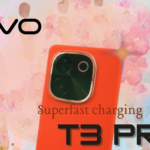Zinc-Manganese Oxide Batteries: A Sustainable Alternative to Lithium-Ion
Researchers at the Department of Energy’s Pacific Northwest National Laboratory (PNNL) have made significant strides in zinc-manganese oxide (ZMO) battery technology. This advancement promises to revolutionize energy storage solutions, offering a more sustainable and cost-effective alternative to current lithium-ion batteries.
The Breakthrough
PNNL scientists, collaborating with the University of Washington, have overcome longstanding challenges in ZMO battery technology. Their research revealed that zinc undergoes a reversible chemical reaction with manganese oxide, converting active materials into entirely new ones during the charge-discharge cycle
This discovery addresses previous issues of rapid capacity loss and short lifespan that had hindered ZMO batteries’ commercial viability.
Key Advantages of ZMO Batteries
- Cost-Effectiveness: ZMO batteries use more abundant and inexpensive materials compared to lithium-ion batteries, potentially reducing production costs significantly
- Environmental Impact: With zinc and manganese being more readily available and less environmentally harmful to extract, ZMO batteries present a greener alternative to lithium-ion technology
- Safety: These batteries are inherently safer, with a lower risk of thermal runaway and fire compared to lithium-ion batteries
- Performance: Recent advancements have pushed ZMO batteries to achieve 285 milliAmpere-hours per gram of manganese oxide over 5,000 cycles, retaining 92% of initial storage capacity
Applications and Potential
ZMO batteries show promise for large-scale energy storage applications, particularly in supporting renewable energy systems and power grids
Their stability and cost-effectiveness make them suitable for:
- Grid-level energy storage
- Backup power systems
- Portable electronics
- Electric vehicles (with further development)
Challenges and Future Directions
While the recent breakthrough is significant, researchers continue to work on improving the technology:
- Energy Density: Current ZMO batteries have lower energy density compared to lithium-ion, which researchers aim to enhance
- Cycle Life: Although greatly improved, further increasing the number of charge-discharge cycles remains a focus.
- Electrolyte Optimization: Ongoing studies are exploring electrolyte modifications to further improve battery performance
Conclusion
The advancements in zinc-manganese oxide battery technology represent a promising step towards more sustainable and affordable energy storage solutions. As research progresses, we may see these batteries playing a crucial role in our transition to cleaner energy systems, potentially rivaling or complementing lithium-ion batteries in various applications by 2027.This breakthrough not only offers a path to reduce our reliance on scarce and environmentally problematic materials but also opens up new possibilities for large-scale energy storage that could accelerate the adoption of renewable energy sources worldwide.
How useful was this post?
Click on a star to rate it!
Average rating 0 / 5. Vote count: 0
No votes so far! Be the first to rate this post.
















